Why did Panasonic wait before demolishing the video competition with the S1H? Find out in our interview!
posted Tuesday, September 3, 2019 at 5:29 PM EDT
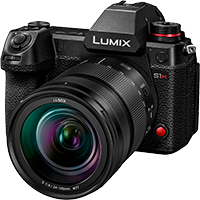
Last week, Panasonic figuratively blew the doors off its competition in the pro video space with the introduction of the Lumix S1H. It offers truly high-end video capability for pro videographers and cinematographers at an unprecedented price point. (US$4,000 is still a chunk of change, but there isn't anything on the market that can touch it for anywhere even close to its price.)
I had a chance to sit down briefly with Yosuke Yamane, Director of Panasonic Corp.'s Imaging Business Unit, Smart Life Network Business Division, Appliances Company, to ask a few questions related to its development and release.
Given Panasonic's strong video roots, one big question we had was why Panasonic waited until now to introduce it. Why didn't they launch it first, rather than the S1/S1R duo? We expected the answer to involve technology, but it turned out to be an entirely different consideration. Read on for the details on that and a range of other topics!
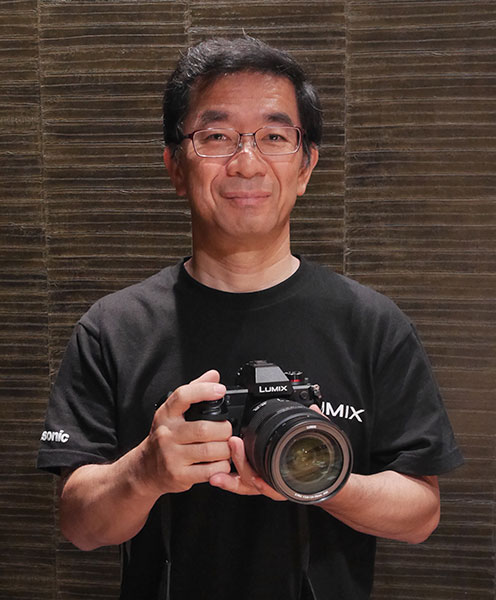
Director, Imaging Business Unit
Smart Life Network Business Division
Appliances Company
Panasonic Corporation
Dave Etchells/Imaging Resource: First, I will just say we were very, very impressed with the Panasonic S1H. Jaron, who was with me -- he just had to leave for the airport -- is a video guy, and he was very impressed by the footage he was getting.
Yosuke Yamane/Panasonic: Thank you.
Dave Etchells: We were curious in terms of just the timing and strategy, why did you wait until now to introduce the S1H? Was there a technology that you needed to wait for, maybe it was the improved autofocus? Or was it more just a matter of releasing the two products and then at this time later, the market responds?
Yosuke Yamane: It's been eight years since I decided to develop full-frame cameras. And officially, we decided to develop the full-frame camera two years ago. At that time, we intended to develop both cameras, still picture-oriented and video-oriented cameras. But the most important thing for developing the camera is [to decide] which mount should we introduce? That's the point. And in order to decide the mount, we have to firstly develop the still-oriented camera.
Dave Etchells: Mmm.
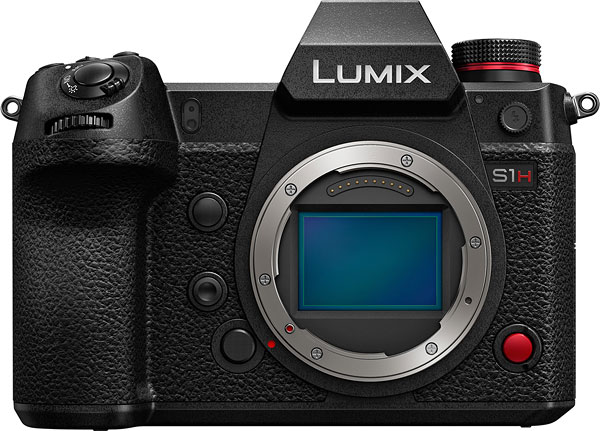
Yosuke Yamane: That's why we have an alliance with Leica and Sigma, and we formed the L-Mount Alliance as you know, in order to expand the range of camera choices for customers. So that's why we decide to put the priority [on the] photo-oriented cameras first.
Dave Etchells: Mmm! Mmm.
Yosuke Yamane: That's why we introduced the Panasonic S1 and Panasonic S1R first, in the spring. Then, as we had decided, we also developed the video-focused camera. So that's why. The S1H was not delayed, but intentionally we put priority onto the photo-oriented cameras rather than video-oriented cameras. That's the timeline.
Dave Etchells: So it was part of the partnership, the L-Mount needed options for still cameras.
Yosuke Yamane: Yeah, that's right.
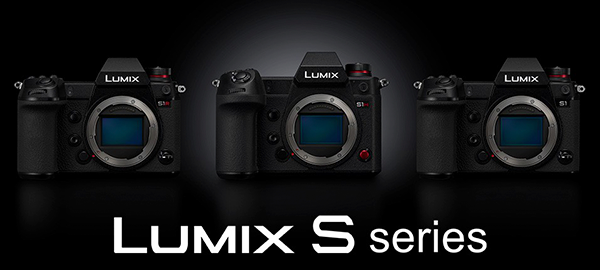
Dave Etchells: Ahhh, so you met that need and then you followed up with the video model as you'd always intended.
Yosuke Yamane: Yes.
[Ed. Note: This is *very* significant, I think. They came out with the still cameras first because the L-mount needed still-shooting bodies to become established. So the overall strategic plan for the alliance is what drove them to develop and deploy the S1/S1R first. Once they'd done that and helped the L-mount gain more traction/volume, they could turn to a camera with serious video chops that likely (my speculation) is more important to them strategically.]
Dave Etchells: Ahhh! We're getting a lot of questions from readers and even my own people asking about the sensor in the S1H. We're told that it's a different sensor than is in the S1. Is it different at a circuit level, or is it just that it has a low-pass filter on it?
Yosuke Yamane: Yeah, as for the sensor, the cell itself is the same. However, we made lots of technical improvements to aid video shooting, such as a low-pass filter to reduce the moire, and Dual Native ISO for the wide range of color gradation. And in order to realize the 6K video, we made lots of improvements for the resolution and to reduce the noise, in order to fit the usage of video shooting.
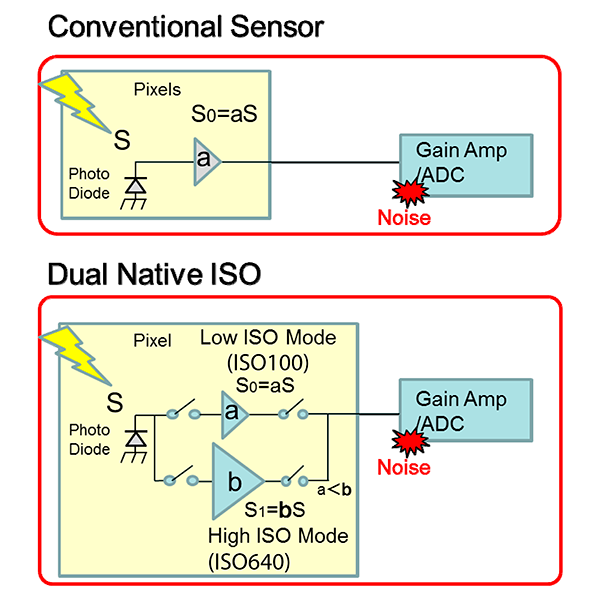
Dave Etchells: Ah, that's interesting to me. So the pixel itself is the same, but you added a second capacitor on the output of each, to make it Dual-Native. Ahhh!
[Ed. Note: Oh *DUH* -- the S1H has dual native ISO, while the S1 doesn't, so of course it’s different! The pixel cell with the photodiode and switching circuitry to route the collected charge to the output is the same, but the S1H has two capacitors for readout, to implement the dual-native ISO, plus an LPF in front of the sensor.]
Yosuke Yamane: Yes.
Dave Etchells: Ah, that's very, very interesting to me. Looking at the market for this camera, where do you see most units being sold? Will it be as second or third or fourth cameras for large productions that are using VariCams? Or do you expect to sell more into smaller production companies or individual videographers, where the S1H is the primary camera?
Yosuke Yamane: The S1H of course incorporates a full-frame sensor. The benefit of that is shallow depth of field and wide dynamic range.
Dave Etchells: Oh, interesting, so VariCam is Super 35mm?
[Ed. Note: You can probably tell that I don't know a lot about the market for high-end pro video cameras :-/]
Yosuke Yamane: Oh, yeah.
Dave Etchells: Ohhh! Yes, yes.
Yosuke Yamane: Yeah, that's why depth of field is there for artistic creation. And the form factor, of course, we can make it as compact as possible and well-balanced. That enables videographer to use special rigs for a wide variety of uses, we can provide that. And so that's why this is the perfect camera for the cinema production and bridal shooting; such various types of shooting style we can provide. Comparing VariCam and EVA1, we can provide lots of applications, lots of other uses for varieties of video shooting. We can offer to the small-sized production firms where their budget is limited.
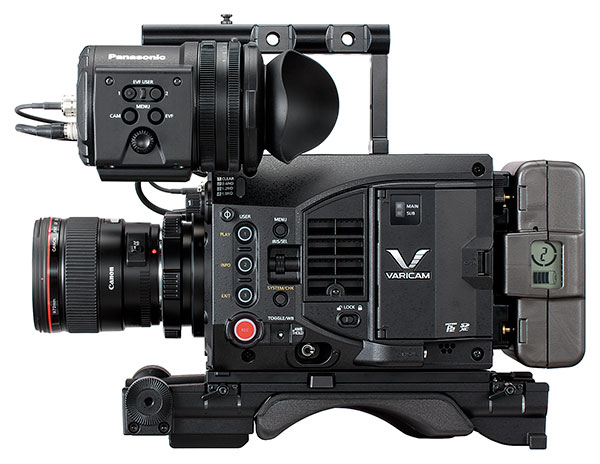
Dave Etchells: In terms of numbers, do you think you'll see more sales with the small production companies, versus additional cameras to large production?
Yosuke Yamane: Yeah, you're right. We are going to address to the small company rather than second cameras for large production companies using VariCam. VariCams as you know, are very top-end cameras, and requires more than US$50,000. So in most cases, these production companies rent them from rental companies. But this one, the S1H, they can purchase for their main camera. So that's a big reason why we are addressing the small companies.
Dave Etchells: Ah, I see. So you're converting VariCam rentals to S1H sales. Ahhh! Makes sense. Just in terms of total numbers, the GH-series has been very, very successful, right? Many people are using it for video production. But it's at a much lower pricepoint. The SH1 is much more expensive than a GH, but it has many more capabilities, and so I'm wondering, even though it's more expensive, do you think it maybe will sell as well or even more than GH models?
Yosuke Yamane: Yeah, [it's] possible. We're going to be very happy if S1H outsells the GH... <chuckles> But anyway, in Micro Four Thirds, the GH-series already has a good reputation, because of the small size and mobility. And it has already been used for independent movie production. But as we said, full-frame sensors provide higher picture expression with the shallow depth of field, resolution and dynamic range. I expect lots of production companies are interested in that and they appreciate the value of full frame. So I think the GH and S1H will co-exist based on the shooting scene.
Dave Etchells: Based on the particular use case, yeah.
Yosuke Yamane: Yeah, based on the particular use case, these two formats will co-exist. As we mentioned today, Leica and Sigma, the L-Mount Alliance partner companies, they have lots of cine lenses. So using this cine lens lineup, we can provide lots of high picture quality expression cameras. Using these L-Mount partner lenses, we can expand opportunities for production people.
Dave Etchells: So it sounds like you would be very happy if it sold as many as GH. GH sold very many, though, so this probably won't sell as many as GH, but it sounds like you think there will be many, many sales for it.
Yosuke Yamane: Yep. Yes, yes. <laughs>
<laughter>
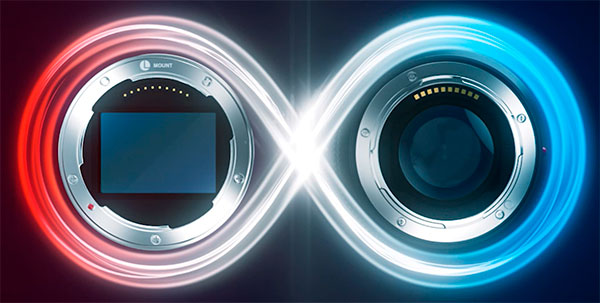
Yosuke Yamane: Yeah, the S1H is my most anticipated camera. I have the biggest expectations for it among S1R, S1 and S1H.
Dave Etchells: This was the camera you were waiting for the most?
Yosuke Yamane: Yeah.
Dave Etchells: Ah!
Yosuke Yamane: Because Panasonic has a long time and a lot of experience with video camera development like VariCam and camcorders, and I have been involved in all the technologies in this segment. So I have been waiting for a long time to develop this model. Finally, we can launch it, so I'm very happy to have this model.
[Ed. Note: Wow, it's interesting to me that Yamane-san has been planning in his own mind and looking forward to creating this camera for something like eight years now!]
Dave Etchells: Ah, I see! That's interesting, that this model is what you've been waiting to create for many years now... Just one remaining question about the market very briefly, and then the other questions are more technical. So the VariCam is obviously very, very expensivey. The EVA1 is much less, I think it's down to about US$6,500 now. [Ed. Note: Panasonic dropped the price of the EVA-1 by $1,000, to its present $6,500 in early January of this year.] But now this camera is very, very capable, for a pricetag of only US$4,000. Do you think that the S1H will cannibalize sales from the EVA1?
Yosuke Yamane: I don't think the S1H will cannibalize EVA1 sales, because the EVA1 incorporates SDI connectors and some additional features. EVA1 has some particular advantages, and the S1H also has particular advantages. The usage will be very different. So no, I believe no cannibalization will happen. And in addition, S1H has a still camera form-factor, and it has very strong capabilities for still camera shooting as well. Both still shooting and video shooting, we can offer this model to photographers, videographers and cinematographers.
Dave Etchells: Mmm, mmm.
Yosuke Yamane: So maybe some of the videographers or cinematographers part will [be duplicated], will overlap with the EVA1's customers. However, the S1H will take a new market for hybrid photographers, videographers and cinematographers. This is the additional market we are addressing.
[Ed. Note: My interpretation of the above is that, while Yamane-san initially said he didn't expect any cannibalization, there will in fact be some overlap between the EVA1 and S1H's customers. It seems that his bottom-line point is that the increase in sales from the S1H will vastly outweigh any loss of EVA1 sales. As I'm writing this, though, it also occurs to me that the S1H will in fact have at least some impact on VariCam sales. They're in vastly different markets, but if a lot of small production companies start buying S1Hs to use as their main cameras, the rental houses won't need to carry as many VariCams in stock. So there's likely to be at least a small impact on that front as well. It'll be interesting to see how that shakes out, but it seems clear that Panasonic is poised to sell a lot more cameras overall into the pro video/cinema market than previously. Given its capabilities, the S1H doesn't seem to have any competition at anywhere near its price point...]
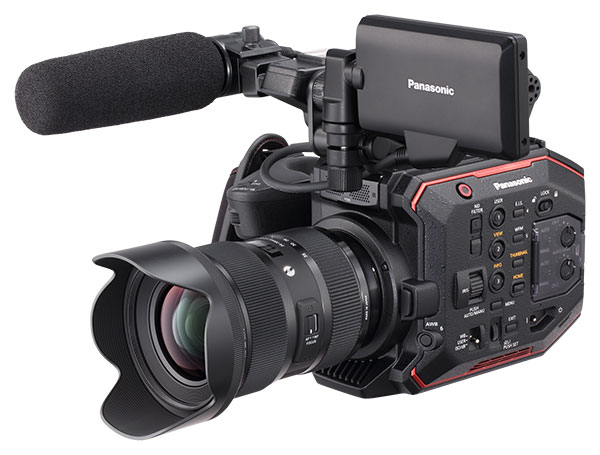
Dave Etchells: Yes. So this is a little bit on the technology itself. Currently, the S1H can do 5.9K at 30 or 24 frames per second, but only in 4:2:0. And as far as I know, you don't get 4:2:2 by going to an external recorder in 6K mode. Is that a limitation of the sensor or the processor, or is it just that there's nothing that can record that externally?
Yosuke Yamane: Yeah, as for the 4:2:0 technique for the internal recording and the 4:2:2 technique for the HDMI out, this is because of the limitation of the system development. But comparing with other cameras, this is the best performance for these cameras, 4:2:2 10-bit HDMI out.
Dave Etchells: Oh, yes, yes.
Yosuke Yamane: In order to make an optimum design, we decided to go with this specification, so please understand this is...
Dave Etchells: Oh, I wasn't saying that I was disappointed. I was more curious whether, if there was a recorder that could record 4:2:2 6K, the camera would be able to output that. Not to record internally maybe, but could it output externally.
Yosuke Yamane: Yeah. We are not going to stop development; we try to improve as much as possible, and to improve the performance. So video recording capability, also for the next model, we will try to improve as much as possible.
Dave Etchells: Mmm, mmm, Yes. So even if there's an external recorder, that's as much as the camera can output -- which I'm saying is still very good! <laughter> But yes, so that will be for the next model. I think that is all of my questions. Thank you very much for your time!
Yosuke Yamane: Thank you.
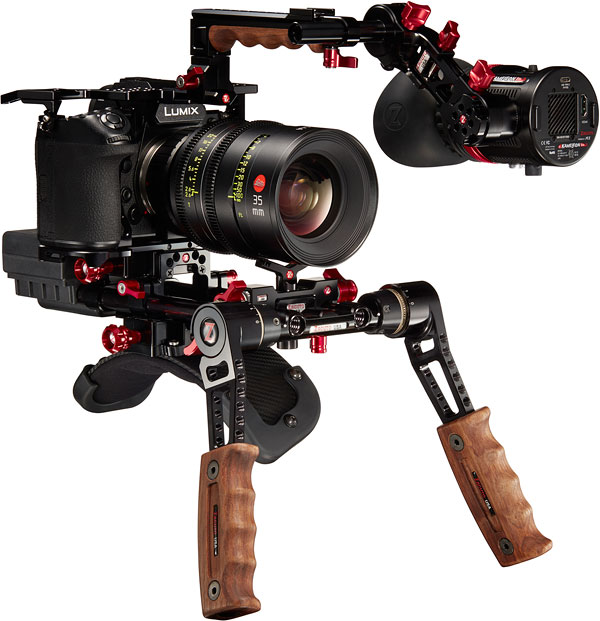
Summary
One thing that didn't come out in this interview or in our other reporting on the S1H launch event in LA last week was just how impressive the footage produced by a range of video and cinema pros using the S1H was. We saw it screened on what one person called "the best projector in Hollywood", at the Dolby Theater on Vine Street. From detail to dynamic range to color, the results were impressive even to a video neophyte like myself. More impressive was to hear what the cinema pros were saying about it, and not just the ones that Panasonic had engaged to create the short films we watched.
It was interesting to me to hear that Yamane-san has actually been looking forward to the debut of this model for the past eight years. That's long before full-frame mirrorless cameras even appeared on the market, let alone ones capable of recording 4K/60p video. But he could see the trends in technology, and was eagerly awaiting the time when the tech could catch up with his vision.
It was also interesting to hear the reason why the S1H is being announced now, rather than as one of the first L-mount, full-frame bodies. The strategy makes sense; the L-mount needed additional still bodies besides Leica's in order to gain traction. Now that it's more firmly established in that realm, the time's right for the S1H to appear, and it's a video monster by any measure. It's not the sort of camera many of IR's traditional readers will pursue, but I expect a lot will share my excitement at marveling over the technology. Even at US$4,000 a pop, it's an extraordinary bargain.
And the time's never been more ripe for it, with Netflix (for which we're told that certification is in the works), Amazon, Apple and others pouring billions in to video production. That's creating unpredecented demand for video cameras of the S1H's level, with hundreds (thousands?) of small production companies looking to own their own equipment, rather than renting. I predict that Panasonic is going to see a lot of success with the S1H going forward!

